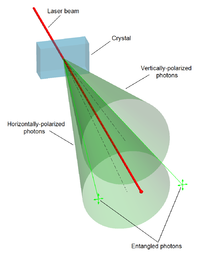
Photo from wikipedia
The emerging Ultra-Reliable and Low-Latency Communication (URLLC) is expected to meet a hard or probabilistic delay constraint that plays a key role in Time Sensitive Networking (TSN) and Deterministic Networking… Click to show full abstract
The emerging Ultra-Reliable and Low-Latency Communication (URLLC) is expected to meet a hard or probabilistic delay constraint that plays a key role in Time Sensitive Networking (TSN) and Deterministic Networking (DetNet). In this paper, we are interested in simple bounds for delay-constrained wireless communications with deterministic or even random packet arrivals. More specifically, we present a sufficient condition and derive a legitimate data arrival rate, with which the bounded delay can be guaranteed deterministically with an average power constraint. Our derived results will show that the delay-bounded data rate increases with the average power and the tolerated latency normalized to the coherent time. Furthermore, we derive the upper and lower bounds of the delay-violation probability (DVP) when the bounded delay condition cannot be satisfied. It is revealed that in the log coordinate, the DVP as a function of the normalized tolerated latency may enjoy a non-linear decay, with a decay rate that increases with the latency bound. This is in contrast to the large deviation based performance analysis that focuses on the low-latency transmission policies achieving linearly decayed DVP only. Our result demonstrates that the joint channel-aware and queue-aware scheduling may significantly reduce the DVP, compared to the single-layer approaches.
Journal Title: IEEE Transactions on Wireless Communications
Year Published: 2023
Link to full text (if available)
Share on Social Media: Sign Up to like & get
recommendations!